What are some warning signs of infection?
- If you have a measured temperature greater than 101.5°F, recurrent chills, yellow or foul smelling drainage, or increasing redness around the incisions you should call the office.
What if I have a low-grade fever after surgery?
- A have a low-grade fever (less than 101.5°F) during the first week after your surgery is common. This is a normal response by your body to the stress of surgery. Drinking plenty of fluids and taking deep breaths is helpful.
Is the swelling normal?
- Yes, some swelling is normal. For lower extremity surgery, it will be worse when the leg is down and better when the leg is elevated. Elevation and ice can be very helpful. If the swelling does not go down or you start to develop calf pain please notify the office. For upper extremity surgery, movement of the wrist/hand/fingers, particularly repetitive squeezing an object such as silly putty can help reduce swelling
Why is there bruising that tracks down the operative limb?
- This is normal after surgery. Blood from the surgical site is pulled down by gravity and causes bruising in locations away from the area that was operated on. Some people get bruising into the foot after knee surgery or the fingers after shoulder surgery. You should not be alarmed it will resolve over 3-5 weeks. The amount of such bruising varies by person.
Is pain normal?
- Yes, surgery is painful. The most pain will occur within the first 72 hours after surgery. There is no purpose in “being a hero” during this time. During the early postoperative period, pain is like fire, if you wait too long to put it out it gets out of control. Take your pain medicines when scheduled for the first few days and then you can begin to space them out. Remember, it takes 30-45 minutes for a pain pill to begin working, so do not wait for the pain to become unbearable before taking the next dose. Also, ice is one of the most important parts of pain relief.
How often should I ice?
- Ice and elevation are your best friends! You should ice around the clock (30 minutes on, 30 minutes off) for the first 3-5 days. Then ice at least 3 times per day thereafter. Be sure to place a thin towel between the ice and your skin.
Should fluid draining from the incisions alarm me?
- If you had arthroscopic surgery, some draining fluid onto the dressing is normal during the first 24-48 hours because we use large amount of water during the surgery and it is therefore only natural for some of this fluid to leak out while your body absorbs the rest. If the bulky bandage becomes wet and red, do not be alarmed; just reinforce it with another bandage. If you have persistent drainage 4 days after surgery, please contact the office.
How do I take off the bandage?
- You may remove the dressing 72 hours after surgery. For knee surgery, remove the ACE wrap and gauze underneath throw it away. For shoulder surgery, carefully peal back the tape and remove the gauze underneath. If there are pieces of yellow gauze you may remove them. Do NOT remove any steri-strips if present. The incisions can stay open to air at this point. You may cover them if you wish with a clean ACE wrap, Band-Aids, or loose gauze dressing so it does not rub/catch on your clothes. Do NOT apply any ointments, creams, or gels.
How do I elevate?
- For lower extremity surgery, prop the leg up (elevation) using several pillows or blankets underneath. Elevation is extremely important to limits swelling and pain after surgery. Proper elevation works by gravity. The foot should be higher than the knee, which should be higher than the hip allowing gravity to pull the fluid/swelling back towards the heart.
What activities can I do?
- It is very important for you to do as much activity as possible while still adhering to the limits imposed by Dr. Taylor. Simply getting up and walking around the house is important. This will decrease the possibilities of post-anesthesia problems such as pneumonia and blood clots. Generally, if you have a job with little physical activity, you may return to work 3-7 days after surgery. If your job requires excessive lifting or use of the arm, then discuss your return to work date with your doctor.
When can I drive?
- You cannot drive for at least 6 weeks following shoulder surgery or at least 4 weeks following knee surgery depending on the side and type of surgery. Prescription narcotic pain medications impair your motor skill, reaction time and judgment. It is against the law to drive while taking prescription pain medications (even if they were prescribed for you). It is also against the law to drive while you are (or should be) in a sling or brace.
What happens at my first post-operative visit?
- Your first postoperative visit typically occurs 10-14 days after surgery. Dr. Taylor will review your surgery and any arthroscopic photographs. He will outline your post-operative physical therapy protocol. If you have sutures that need to be removed, they will be. You will be provided a copy of your operative report and any arthroscopic pictures for your records.
What if I need a pain medicine refill?
- Only your doctor and his staff can call in pain medication. During the weekend, on call doctors will NOT call in prescriptions for you. Therefore, if you feel that you will need a prescription during the weekend, please call the office during regular business hours.

